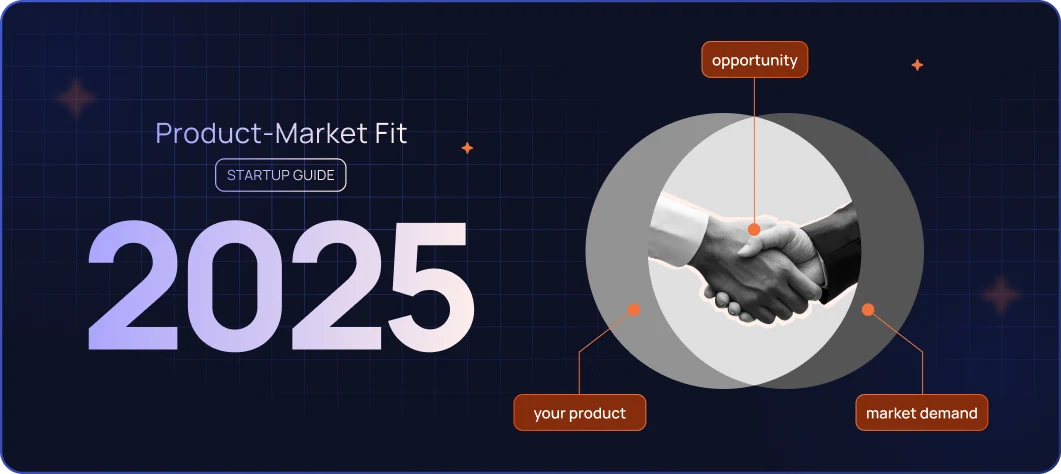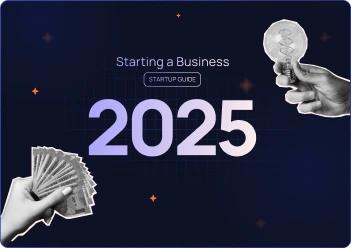Table of Contents
Surprisingly, 90% of startups fail, but this doesn’t mean you will be part of that statistic. Startups that fail often show what goes wrong, so you can plan better and improve your chances. - All founders speak of it. Investors seek it. But most startups get it wrong. Product-market fit is not a buzzword. It's the point at which your product intersects actual market demand. In 2025, this remains the top priority for any founder seeking startup success. Without it, growth becomes stagnant. With it, the game is changed. Achieving product-market fit requires thorough product validation and in-depth market demand analysis. It's how you validate that people want what you've created. Startup success factors can be different, but this one is not negotiable. Get this right, and your chances of success soar. Miss it, and your startup might never grow.
Defining Product Market-Fit
What Marc Andreessen Originally Intended?
When Marc Andreessen coined the term, he used it to describe product-market fit as the point at which a product “just flies off the shelves.” Customers are purchasing, consuming, and talking—without you hard-selling. It’s an unvarnished, unambiguous market demand.
Contemporary Interpretation within Today’s Tech Landscape
Nowadays, product-market fit means that your solution fundamentally aligns with a customer’s pain points, and your business model supports scalable delivery. It’s not about just demand; it is about sustainable, repeatable value.
Why PMF Is Not the Same as Early Traction?
Many startups confuse early interest with PMF. But real product-market fit sticks. Users come back. Referrals grow. Revenue proves alignment.Ask yourself: How to know if you have product-market fit? Seek out usage patterns, retention, and authentic excitement. These are concrete signs of product-market fit for startups.And remember: Product-market fit vs growth is an actual trade-off. Don’t scale before you’ve nailed the fit.
Why It Matters More Than Ever in 2025
In 2025, market saturation is real. Every niche has several players—many supported by AI-powered competitors acting quickly and evolving quicker. To win, startups require more than an idea that works. They require product-market fit (PMF). Today’s users demand frictionless solutions that fit their needs. If your product doesn’t provide a good problem-solution fit, they’ll leave—fast. Without genuine product-market alignment, even the best marketing efforts are for naught.That’s why one of the most vital startup success drivers is PMF. It confirms your product, demonstrates startup fit with the market, and directs your go-to-market.
- No product validation = no growth.
- No market demand analysis = no traction.
Without PMF, everything else falls apart.
Common Misconceptions Startups Still Have
This is among the largest startup myths. Early users don’t necessarily equal product-market fit.Founders often mix up MVP traction with sustained demand. However, product validation is more than a few downloads or beta sign-ups. These are vanity metrics—they read well on paper but don’t reveal much about actual use or value.
How do you know if you have product-market fit?
Ask:
- Are users coming back again and again?
- Are they telling others about your product?
- Are they fixing real problems with your product?
The actual signs of product-market fit for startups are retention, word-of-mouth, and organic growth, not noise.Mixing up MVP success with complete product-market alignment causes premature scaling.That’s where product-market fit vs growth struggle starts—and most people fail.Identifying the suitable audience for your startup via intense market demand analysis is critical. Otherwise, you cannot realise real startup success factors and create something that can last.
Early Red Flags That You Don’t Have PMF
You launched. You marketed. Yet something’s still not right.That’s probably a failure of PMF and the signs are straight forward to see.
- Excessive churn or user apathy
- Low engagement, even with promotions or discounts
- No referrals. No returns. Just silence.
These are indicative of a bad startup fit with the market. You might be solving a problem, but one that your target market doesn’t need solved urgently. Without a genuine problem-solution fit, users evaporate quickly.True product-market fit is when users stick around, participate, and champion. Without that, it’s back to the drawing board for the core offering.Because without PMF, growth isn’t only difficult—it’s not possible.
What Founders Are Getting Wrong in 2025
Sprinting to ship without knowing users? That’s a formula for disaster. Too many startups bypass the fundamentals and suffer.Shipping too fast, without conducting deep customer interviews.Targeting everyone and reaching no one cutting problem validation to move quicker. These are fatal mistakes that slow down or kill product-market fit. Actual startup success drivers start with empathy. You must understand what your listeners truly require—before you even write one line of code.
Why PMF Isnt a One -Time Event
You may have hit PMF today—but that doesn’t guarantee you’ll have it tomorrow.Markets shift fast. New tech, AI disruption, and evolving customer expectations can quickly change what your audience wants. What felt like a strong problem-solution fit this year may fall flat the next.That’s why product-market fit ≠ a checkbox. It’s a continuous pursuit.Founders who win in 2025 build with agility. They gather constant feedback, listen actively, and adapt. Ongoing product-market alignment is now a core strategy—not an optional one.Success lies in refining your startup fit with the market, especially as your product grows.Don’t confuse early traction and product-market fit—they’re not the same.And don’t scale until you’re sure you’ve found and are still serving the right audience for your startup.Because only the ones that adapt survive in the war of product-market fit vs growth.
Case Studies of Missed and Nailed PMF
1.The SaaS Pivot That Paid Off
A bootstrapped SaaS company invested 18 months developing features for SMBs. Yet retention was weak, and churn remained high. Following intense market demand analysis and customer interviews, they pivoted to market to solo consultants instead. The payoff? 3x revenue within 6 months and genuine product-market fit. The takeaway: listen early, pivot quicker.
2. ECommerce Brand Finds Gold in a Micro-Niche
This DTC brand attempted to sell general wellness products—and failed. Then they targeted postpartum moms with Ayurvedic care kits. Engagement skyrocketed. Real product validation, laser focus, and tight messaging resulted in repeat buyers and viral growth.Startup success factors: niche clarity + user trust = PMF.
3.Funded but Flawed: A B2B Tool That Missed the Mark
Even though it raised millions, a B2B scheduling software never took off. Why? It fixed a small issue, not an actual pain point. No problem-solution fit, no loyalty. The team finally shut it down. Evidence that money does not purchase product-market alignment.
Conclusion
Product-market fit is not a nicety—it’s the backbone of every successful startup. Without it, even great ideas get stuck. With it, growth is organic.True startup success factors begin with user listening, addressing real issues, and aligning business models. It’s more than launch mania; it’s long-term value.By ongoing product validation and rigorous market demand analysis, founders can create products that stick, grow, and serve.
The road to product-market fit is seldom linear. But it’s always the effort.
FAQ
1. What is product-market fit in a startup?
Product-market fit (PMF) occurs when a startup’s product satisfies a real and significant demand in the market. It means customers not only understand and use your product but also find it valuable enough to keep coming back, refer others, and drive sustainable growth. In short, PMF is the point where your solution truly “fits” the market’s needs.
2. How can I measure if I’ve achieved PMF?
A widely recognized method is the Sean Ellis Test, where you ask users: How would you feel if you could no longer use [product]? If 40% or more respond with “Very disappointed,” it’s a strong indicator of PM
3. Is PMF a one-time milestone or an ongoing process?
PMF is not static; it’s a continuous journey. Markets evolve, customer needs change, and new competitors emerge. Regular feedback loops and product iterations are essential to maintain alignment with your audience.
4. What are common misconceptions about PMF?
Early traction ≠ PMF: Initial interest doesn’t guarantee long-term success. PMF is not about vanity metrics: Focus on user retention and satisfaction, not just sign-ups.PMF isn’t achieved through marketing alone: It requires a genuine product-market alignment.
5. How can I test for PMF without a full-scale launch?
Conduct in-depth customer interviews and surveys to gauge interest and satisfaction. Offer prototypes or beta versions to gather real-world feedback. Utilize tools like in-app surveys to assess user sentiment.
6. Why is PMF crucial for startup success?
Achieving PMF validates that you’re solving a real problem for a sizable market. It reduces customer acquisition costs, enhances retention, and positions your startup for scalable growth.
7. What is the main goal of reaching product-market fit?
The main goal of reaching product-market fit is to ensure your product solves a real problem for a clearly defined audience, so users adopt it consistently, stay engaged, and refer others—creating a foundation for sustainable growth.


